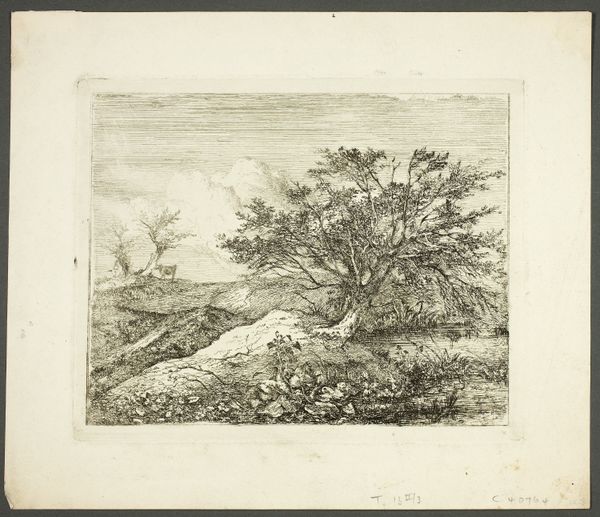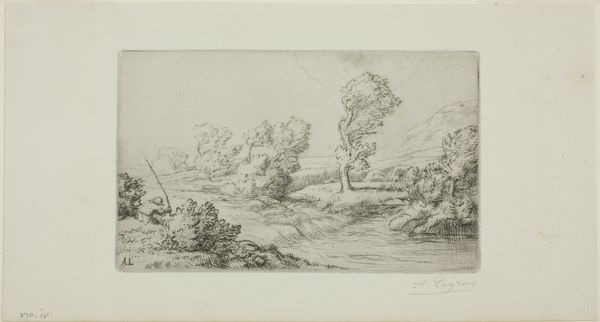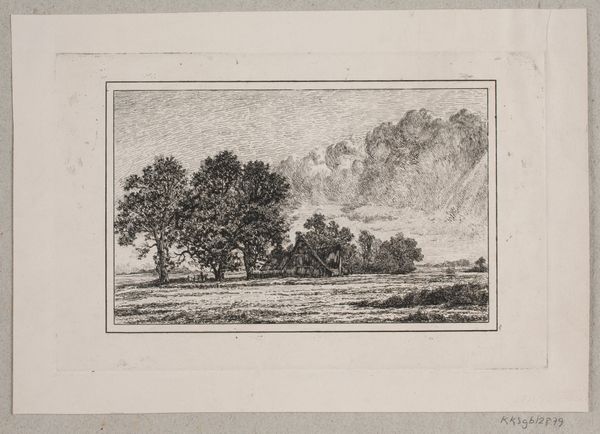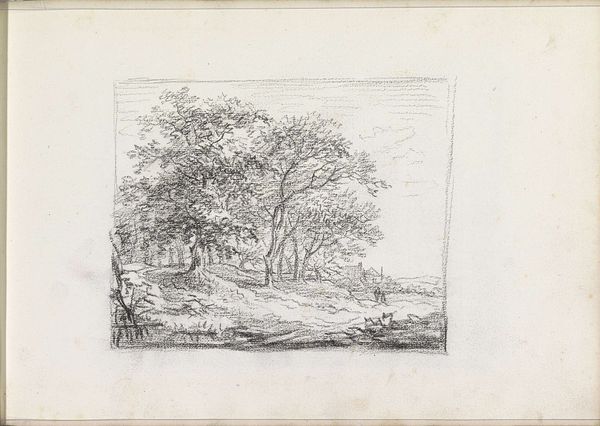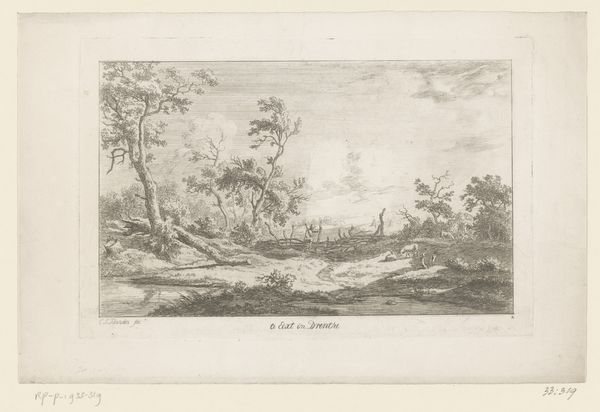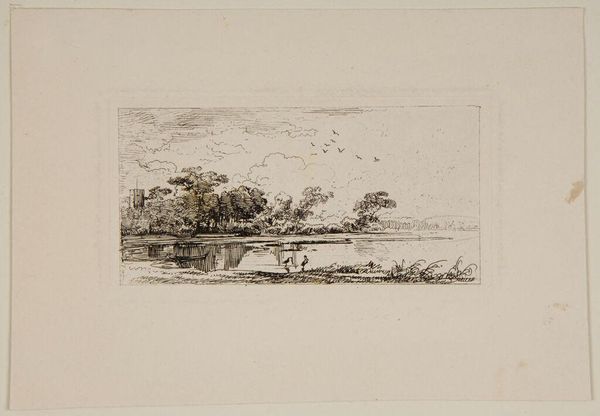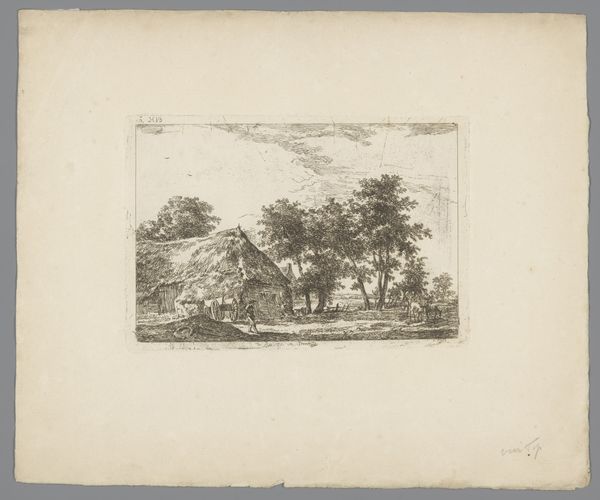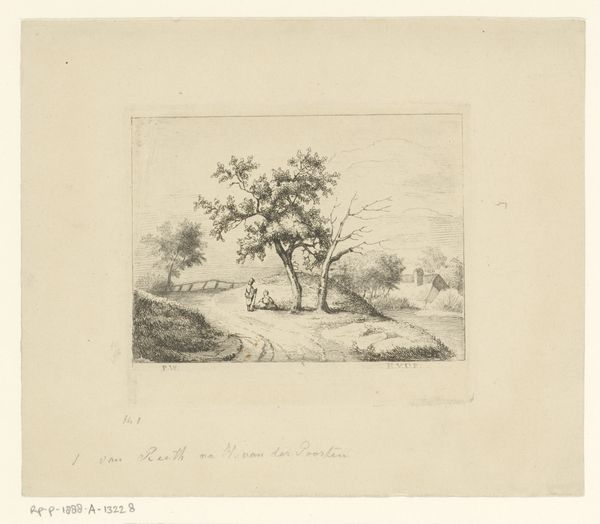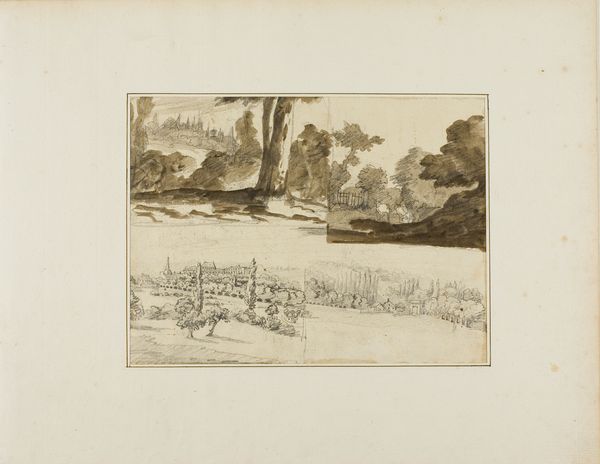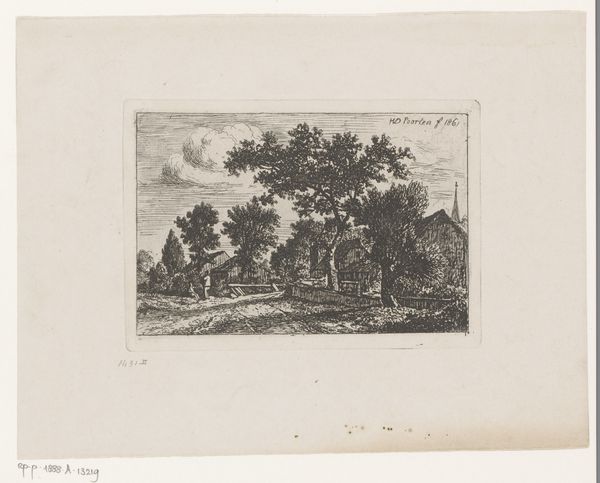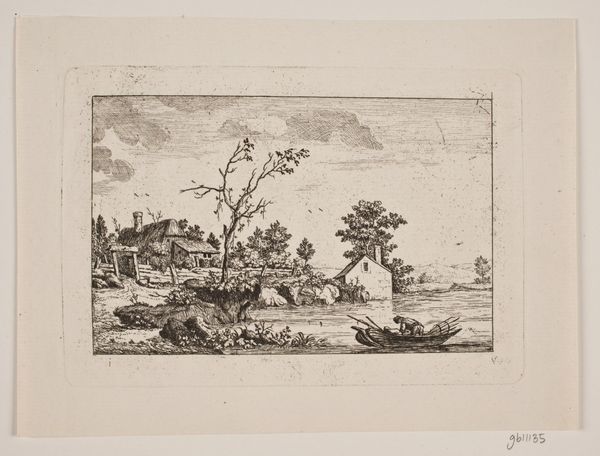
Dimensions: 119 × 161 mm (plate); 181 × 204 mm (sheet)
Copyright: Public Domain
Editor: Here we have Alphonse Legros's etching, "The Hamlet by the Lake," created around 1903. The detail achieved with just etching on paper is fascinating. I’m really drawn to the peaceful, almost nostalgic mood it evokes. What strikes you when you look at this piece? Curator: I see Legros engaging with a key theme of late 19th and early 20th-century art: the relationship between rural life and industrializing society. Notice the deliberate choice of representing a humble hamlet rather than a bustling urban center. What might Legros be implying by focusing on such a quiet scene? Editor: Maybe he's idealizing a simpler past, or perhaps critiquing the changes happening in French society at the time? Curator: Precisely. Artists like Legros often used landscapes to comment on the rapid social and economic transformations taking place. Consider the context: the rise of industrial capitalism was drastically altering rural communities. Artists responded by either glorifying or lamenting this change through their imagery. The very act of displaying such scenes in urban art institutions brings the rural, often marginalized, into conversation with the wealthy. Editor: That’s a great point. How the location of display impacts meaning. This piece really highlights how art can participate in complex cultural conversations. Curator: Yes, it becomes a dialogue about what’s valued, what’s being lost, and who has the power to shape those narratives. Reflect on whose voices and perspectives are missing in these idealized depictions of rural life? Editor: Definitely gives a new appreciation for the layers of meaning that etchings like this can carry. Curator: Indeed. The image prompts us to reflect on the artist's and our role in preserving certain narratives over others.
Comments
No comments
Be the first to comment and join the conversation on the ultimate creative platform.
